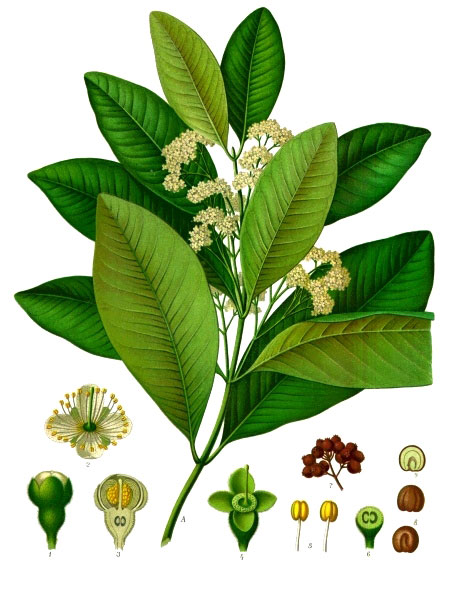Allspice

Origin: Central America
Family: Myrtaceae
Scientific Name: Pimenta dioica (L.) Merr.
Folk Names: Clover-pepper, Jamaica Pepper, Myrtle Pepper, Newspice, Pimenta, Pimento Berry, Turkish Yenibahar
Magical
Element: Fire
Day: Tuesday
Planet: Mars
Zodiac: Scorpio
Associated Celebrations: ShadowFest
Parts Used: Berries
Magical Properties: Energy, healing, luck, money, courage, vitality, passion, spirituality
Substitutions: Cassia, cinnamon, clove, nutmeg
Lore
It was named ‘Jamaican pepper’ ('pimenta') by the Spanish, due to its similar appearance.
Magical Uses
- Add allspice to foods for money and healing.
- Use the berries or oil in incenses to aid in workings attracting money or luck.
- Allspice oil is ideal for use in consecration blends, eg for consecrating amulets, altars, and ritual space.
Aromatherapy
Part Used: Berries, leaves
Extraction Method: Steam distillation
Flash Point: 93°C
Scent Type: Spicy
Perfume Note: Middle
Scent Description: Warm, sweet, spicy scent
Aromatherapeutic Uses
Allspice oil is warming, and can help with arthritis, and muscular aches and pains.
Warnings:
- May cause skin irritation and sensitisation, dilute double for topical application.
Practical
Indigenous Uses:
- Allspice was used by the Maya as an embalming agent.
- It was as well as in South America to flavour chocolate.
- The Arawak used allspice to cure and preserve meats.
Culinary
Allspice is used heavily in cooking, particularly in Jamaican and Middle Eastern cuisine. It’s also used as a ‘pepper’ in five-pepper blends.
In areas where the plant is native, the wood and leaves are often used for smoking meats.
Beauty
Allspice is regularly used as a fragrance in masculine soaps and perfumes.
Botanical
The allspice plant grows poorly outside of the tropics, and it was once believed to be impossible to grow outside of its native range. The seeds rely on birds' digestive systems to be able to germinate.
Type: Evergreen tree
Plant size: 10-20m
Leaves: Glossy, aromatic leaves, 15cm long
Flowers: Small, white flowers
Fruit: Pepper-like berries, which ripen to a red-purple colour
Etymology: Named “allspice” in the early 1600s by the English, who valued it for containing the flavours of cinnamon, nutmeg, and clove.
